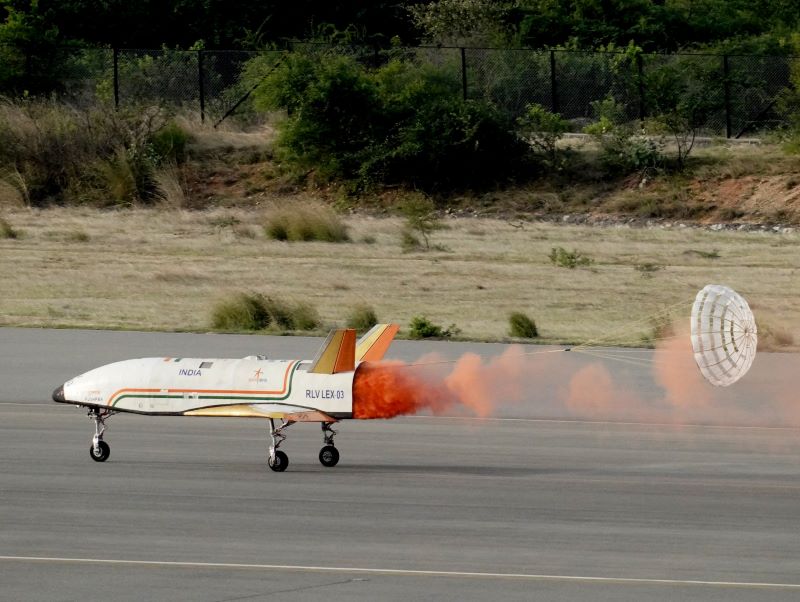
In a rare feat, ISRO makes hat-trick in safe landing of Pushpak, an uncrewed winged reusable launch vehicle
New Delhi//IBNS: In a rare achievement for any space agency, the Indian Space Research Organisation (ISRO) Sunday achieved a hat-trick of the safe landing of an uncrewed, autonomous winged reusable launch vehicle during an experiment in this century.
In a statement, ISRO said it has proudly achieved a third consecutive success in the Reusable Launch Vehicle (RLV) Landing Experiment (LEX) on Sunday. "The third and final test in the series of LEX (03) was conducted at 07:10 IST at the Aeronautical Test Range (ATR) in Chitradurga, Karnataka," it said.
Hat-trick for ISRO in RLV LEX! 🚀
— ISRO (@isro) June 23, 2024
🇮🇳ISRO achieved its third and final consecutive success in the Reusable Launch Vehicle (RLV) Landing EXperiment (LEX) on June 23, 2024.
"Pushpak" executed a precise horizontal landing, showcasing advanced autonomous capabilities under… pic.twitter.com/cGMrw6mmyH
The making of India's own delta-winged 'space shuttle' of sorts, though uncrewed, is indeed a big leap of faith at a point where other agencies are only attempting to bring back spent hollow rocket stages.
A whole new vehicle much larger in size will be made for the orbital test based on the success of Sunday's test and it will first be tested in a landing experiment before it is flown into space and brought back to Earth like a space plane.
According to ISRO, the success of the RLV (Reusable Landing Vehicle) LEX-01 and LEX-02 missions, RLV LEX-03 re-demonstrated the autonomous landing capability of the RLV under more challenging release conditions (cross range of 500 m against 150 m for LEX-02) and more severe wind conditions.
RLV-LEX3 images pic.twitter.com/PO0v0StC3A
— ISRO (@isro) June 23, 2024
The winged vehicle, 'Pushpak', was released from an Indian Air Force Chinook Helicopter at an altitude of 4.5 km. From a release point 4.5 km away from the runway,
Pushpak autonomously executed cross-range correction manoeuvres, approached the runway and performed a precise horizontal landing at the runway centreline. Due to this vehicle's low lift-to-drag ratio aerodynamic configuration, the landing velocity exceeded 320 kmph, as compared to 260 kmph for a commercial aircraft and 280 kmph for a typical fighter aircraft.
After touchdown, the vehicle velocity was reduced to nearly 100 kmph using its brake parachute, after which the landing gear brakes were employed for deceleration and stop on the runway. "During this ground roll phase, Pushpak utilises its rudder and nose wheel steering system to autonomously maintain a stable and precise ground roll along the runway," the ISRO statement said.
Support Our Journalism
We cannot do without you.. your contribution supports unbiased journalism
IBNS is not driven by any ism- not wokeism, not racism, not skewed secularism, not hyper right-wing or left liberal ideals, nor by any hardline religious beliefs or hyper nationalism. We want to serve you good old objective news, as they are. We do not judge or preach. We let people decide for themselves. We only try to present factual and well-sourced news.







